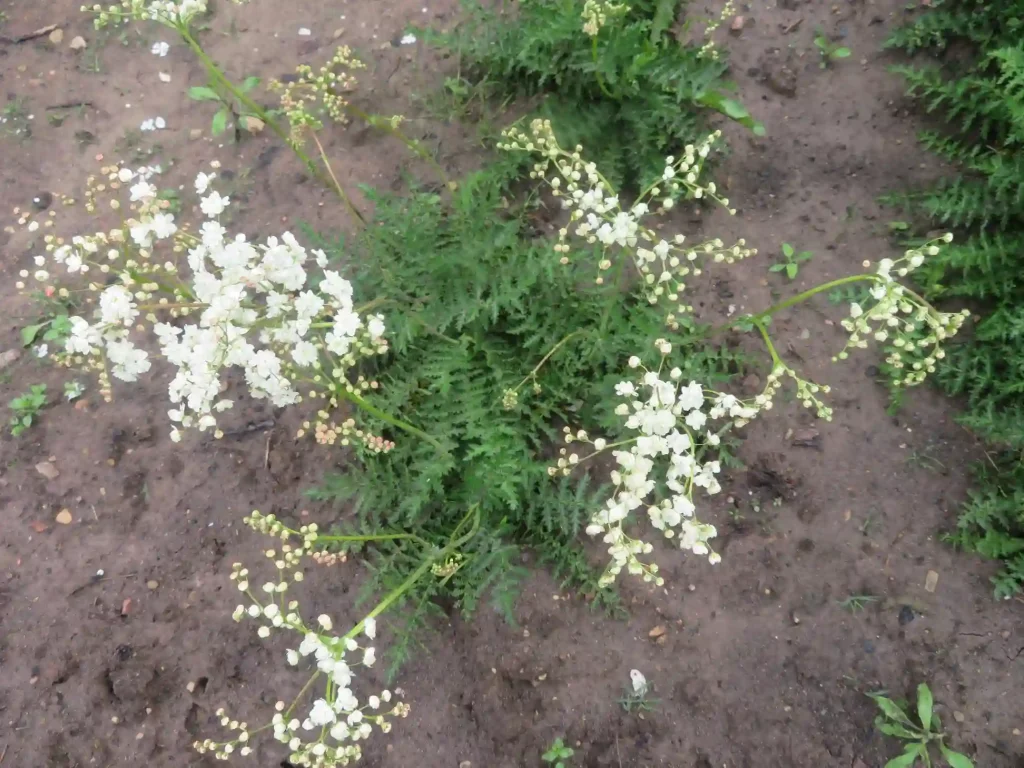
All About Symphoricarpos Orbiculatus: A Gardener’s Guide
I’m Ferb Vu, and I’m here to answer all your questions about Symphoricarpos orbiculatus, a stunning shrub better known as Coralberry. This easy-care plant boasts beautiful berries and provides year-round interest in your garden. Let’s delve into everything you need to know about growing this gem.
15 Species in Genus Symphoricarpos
What is Symphoricarpos Orbiculatus?
Symphoricarpos orbiculatus, also called Indian Currant, Buckbrush, or Waxberry, is a deciduous shrub native to eastern and central North America. It belongs to the Caprifoliaceae family, closely related to honeysuckle.
This versatile shrub features arching stems adorned with oval-shaped, deep green leaves that turn a subtle yellow in fall. But the real showstopper is the abundance of small, spherical berries that emerge in late summer and persist well into winter. These berries come in shades of pink, purple, and coral, adding a pop of color to your garden during the colder months.
How to Care for Symphoricarpos Orbiculatus?
Coralberry is a low-maintenance shrub that thrives on neglect, making it perfect for busy gardeners. Here’s what you need to know:
- Light: Symphoricarpos orbiculatus adapts well to full sun or partial shade. In hotter climates, some afternoon shade is beneficial.
- Soil: This shrub prefers well-drained soil but tolerates a range of soil types, including clay and loam. Amending your soil with compost before planting is recommended.
- Watering: Water regularly during the first growing season to establish a strong root system. Once mature, Coralberry is drought-tolerant and requires minimal watering, except during extended dry periods.
- Fertilizing: Fertilizing is not necessary for Coralberry. However, if your plant appears weak, a light application of a balanced fertilizer in spring can be beneficial.
- Pruning: Pruning is optional and can be done in late winter or early spring to maintain size and shape. You can also remove dead or diseased branches.
How to Propagate Symphoricarpos Orbiculatus?
There are two main ways to propagate Coralberry:
- Division: This is the easiest method. In early spring or fall, carefully dig up a mature plant and divide it into sections, each with healthy roots and stems. Replant the divisions in prepared holes and water them well.
- Softwood Cuttings: Take softwood cuttings in early summer. Choose non-flowering stems with a few nodes, cut them just below a node, and remove the lower leaves. Dip the cut ends in rooting hormone and plant them in a pot filled with moist potting mix. Keep the soil moist and provide indirect sunlight. The cuttings should root within a few weeks.
What to Plant with Symphoricarpos Orbiculatus?
Coralberry’s graceful arching stems and colorful berries make it a versatile addition to various garden designs. Here are some ideas for companion plants:
- Perennials: Combine Coralberry with colorful perennials like daylilies, columbine, or Russian sage for a vibrant display.
- Ornamental Grasses: The contrasting textures of Coralberry with ornamental grasses like feather reed grass or blue fescue create a beautiful low-maintenance planting.
- Spring Bulbs: Plant daffodils, tulips, or crocuses under Coralberry for a burst of color in early spring before the shrub leafs out.
- Roses: Coralberry can act as a low-growing border around rose bushes, providing winter interest and helping control erosion.
Important Considerations for Symphoricarpos Orbiculatus
While Coralberry is generally resistant to pests and diseases, be aware of these potential issues:
- Aphids: These small, soft-bodied insects can suck the sap from leaves. Insecticidal soap spray is an effective control method.
- Deer: Deer may browse on Coralberry foliage, particularly in harsh winters. Planting deer-resistant shrubs nearby can help deter them.
Toxicity: It’s important to note that the berries of Symphoricarpos orbiculatus are considered mildly toxic and can cause stomach upset if ingested in large quantities. Keep this in mind if you have young children or pets who might be tempted to eat them.
Conclusion
Symphoricarpos orbiculatus, or Coralberry, is a beautiful and low-maintenance shrub that adds year-round interest to your garden. With its easy-going nature and vibrant berries, it’s a perfect choice for both experienced and novice gardeners alike. So, if you’re looking for a hassle-free shrub that provides winter beauty, consider adding Coralberry to your landscaping plans.
If i die, water my plants!



